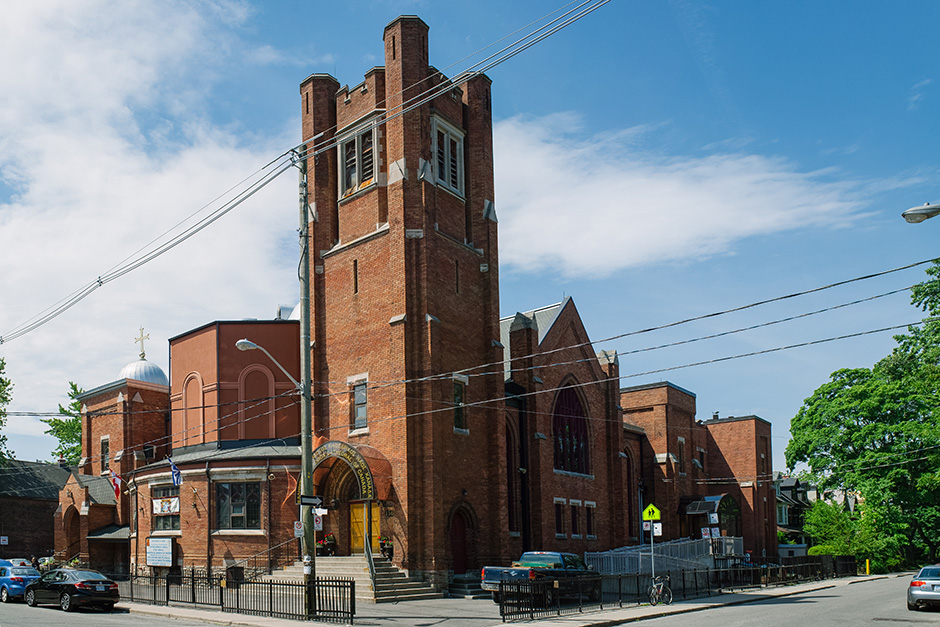The Holy Metropolitan Church of the Annunciation to the Virgin Mary stands as a beacon of faith, not merely a structure of bricks and mortar but as an embodiment of the divine communication between the heavenly and the earthly realms. Located in the societal tapestry of Greek Orthodox heritage, this cathedral serves as a radiant symbol of devotion that transcends time and cultural shifts. Its architectural grandeur mirrors the spiritual significance it holds, inviting the faithful and curious alike into a sanctuary of worship and reflection.
As one approaches the Holy Metropolitan Church, one is met with an intricate façade that captivates the eye and stirs the soul. The harmonious blend of Byzantine architectural elements—flaunting domes that pierce the heavens and ornate icons adorning the walls—creates a visual narrative that invites reverence and contemplation. Each archway, each column, tells a story rooted in centuries of Christian tradition, drawing individuals closer to the divine narrative of the Annunciation.
The Annunciation, a pivotal moment chronicled in the Gospel of Luke, showcases the angel Gabriel’s delivery of God’s message to the Virgin Mary, heralding the Incarnation. The cathedral serves as a tangible reminder of this miraculous event, offering a space where the faithful may experience a profound connection to the Divine. Here, the air is thick with the incense of prayer and the whispers of countless souls who have sought solace and guidance within its sacred walls.
Stepping inside the church, the ambiance transforms; the hustle and bustle of daily life fades, replaced by a profound stillness. Sunlight filters through stained glass windows, casting vibrant hues upon the stone floors—a kaleidoscope of color that depicts scenes from Christ’s life and the saints. This interplay of light and shadow creates a spiritual milieu, reflecting the notion that in darkness, one can find illumination, a poignant metaphor for the human experience.
Central to the interior is the iconic iconostasis, a remarkable screen richly adorned with icons of Christ, the Virgin Mary, and various saints. These images serve not only as decorative elements but as conduits between the earthly and the celestial. Visitors are drawn to the vibrant imagery, each icon imbued with the lifeblood of devotion and artistry. The meticulous detailing showcases the painstaking craftsmanship of artisans who, over generations, have poured their souls into creating visual prayers that evoke the spiritual fervor of the Orthodox faith.
The theological significance of the Grand Metropolitan Church of the Annunciation extends beyond its physical attributes; it is a living testament to the Greek Orthodox tradition. The church, as a sanctuary, plays a pivotal role in the community, enriching the spiritual lives of its congregants. Regular services, feasts, and liturgical celebrations serve as communal gatherings that nurture a deep sense of belonging and connection among worshippers. Through its vibrant life, this sacred space echoes the words of the Gospel: “Where two or three are gathered in my name, there am I among them.”
Moreover, the architectural elements themselves can be seen as metaphors for faith and perseverance. The domes, each representing aspirations toward the divine, stand firm against the tests of time and circumstance. They invite believers to lift their eyes, encouraging an elevation of spirit, much like the act of prayer which transcends earthly troubles and enables communion with the Divine. The steadfastness of the church structure reminds worshippers that faith, too, remains unshakeable, grounded in a tradition that espouses resilience and hope.
Throughout the centuries, the Holy Metropolitan Church of the Annunciation has witnessed moments of joy and sorrow, of triumph and tribulation. During times of national crisis, it has operated as a sanctuary for the displaced and a wellspring of hope for those facing despair. The cathedral’s enduring presence reassures the faithful that even amidst chaos, there lies a refuge—an embodiment of God’s providence.
The ecclesiastical calendar is punctuated by significant feasts and celebrations that mark the life of the church and its community. The Feast of the Annunciation, in particular, holds a central position—an occasion where the faithful gather to commemorate the announcement of the angel. It is a day filled with joy, underscored by the singing of hymns that reverberate within the walls, echoing the angelic proclamation. Here, the congregation’s unity is a testament to their shared devotion, a harmonious choir that transcends individual voices to become a symphony of faith.
In addition to its spiritual functions, the church serves as an educational hub, disseminating the teachings of Christ and the rich theological traditions of Orthodoxy. Through catechism classes, lectures, and community outreach programs, it nurtures not only the spiritual well-being of its members but also fosters an understanding of Orthodox culture, heritage, and values, ensuring that the essence of faith continues to illuminate the path for future generations.
In conclusion, the Holy Metropolitan Church of the Annunciation to the Virgin Mary encapsulates the essence of the Greek Orthodox faith, serving as a sanctuary of hope, a monument of artistic expression, and a vibrant center of community life. It stands not as mere architecture but as a living testament to faith’s capacity to endure, uplift, and transform. As both a place of pilgrimage and a cultural landmark, it invites all who enter to embark on a journey of spiritual discovery, thereby creating a tapestry woven with the threads of faith, art, and community—forever echoing the heart of the Annunciation, where heaven meets earth in divine synchronicity.



